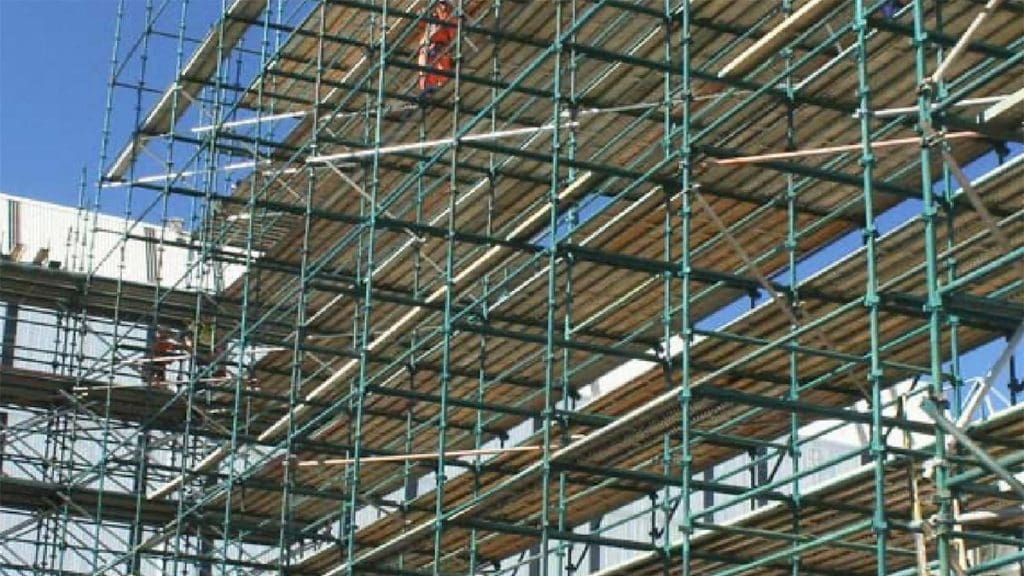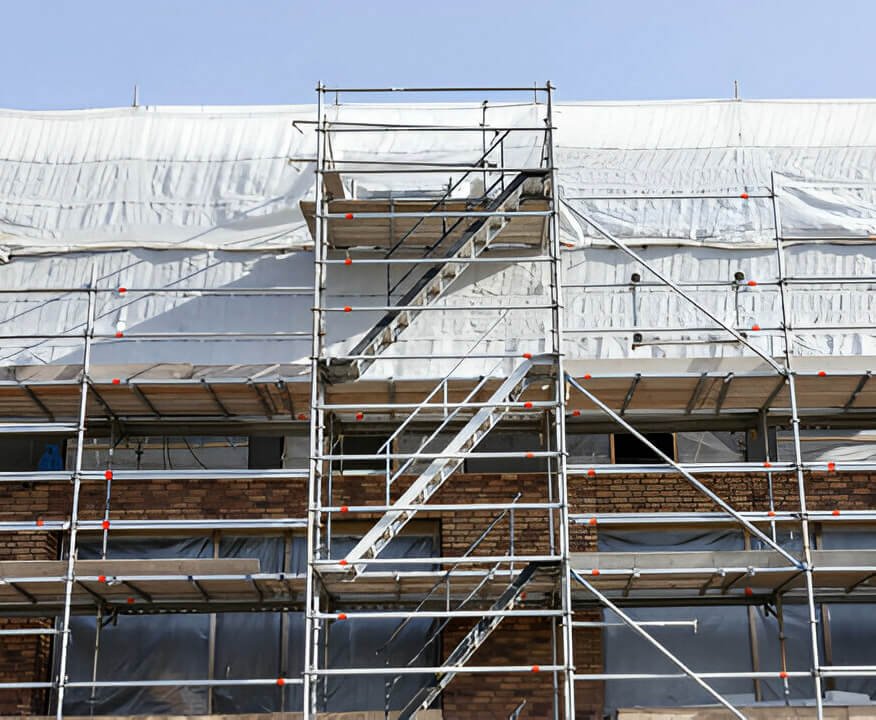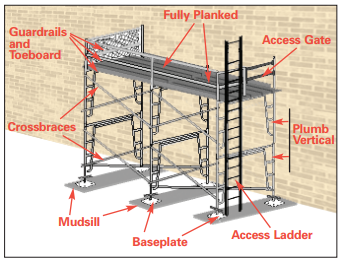Exploring the Different Types of Scaffolding Used in Construction Jobs
The construction industry relies greatly on various types of scaffolding to satisfy particular job demands, each offering distinctive advantages and applications. Typical frame scaffolding provides a tough structure for basic tasks, while put on hold scaffolding is essential for work with high-rise frameworks. Other alternatives, such as system and rolling scaffolding, deal with effectiveness and wheelchair, respectively. The cantilever alternative confirms indispensable in city environments where area is constricted. Understanding the subtleties of these scaffolding kinds is vital for enhancing safety and performance on building and construction sites, prompting a better examination of their one-of-a-kind characteristics and applications.

Conventional Framework Scaffolding
Conventional framework scaffolding is one of the most widely made use of methods in the construction industry because of its effectiveness and versatility. This system includes upright and horizontal structures that are constructed to develop a steady platform for products and workers. The main parts include upright posts, horizontal journals, and diagonal dental braces, which with each other provide a strong structure that can sustain significant loads.
Among the crucial benefits of typical frame scaffolding is its flexibility to numerous building and construction jobs, ranging from domestic buildings to big commercial frameworks. The modular design permits for easy setting up and disassembly, making it efficient for both long-term and short-term jobs. Furthermore, the system can be personalized in height and size, suiting various building styles and site problems.
Safety is vital in scaffolding applications, and conventional structure systems are furnished with guardrails and toe boards to stop drops and make certain employee defense. Additionally, regular assessments and adherence to safety and security laws are important in keeping the stability of the scaffold. Generally, standard framework scaffolding remains an essential choice in the building and construction sector, giving a trustworthy system for labor and improving total task performance

Suspended Scaffolding
Put on hold scaffolding offers an one-of-a-kind service for construction jobs that call for accessibility to elevated surfaces, specifically in scenarios where standard frame scaffolding may be not practical. This kind of scaffolding is typically put on hold from the roofing system or upper degrees of a framework, making use of a system of systems, ropes, and pulley-blocks to create a working area that can be changed to different heights.
Among the primary advantages of suspended scaffolding is its flexibility. It can be conveniently repositioned or lowered to accommodate adjustments in building and construction requirements, making it suitable for jobs such as window installment, frontage work, and upkeep on skyscraper structures. Furthermore, the very little impact of suspended scaffolding permits much better use ground area in metropolitan settings, where area is usually limited.
Security is a critical consideration in the use of suspended scaffolding. On the whole, suspended scaffolding supplies a effective and reliable option for accessing hard-to-reach areas in various building and construction circumstances, improving both productivity and safety and security on website.
System Scaffolding
System scaffolding, usually considered a contemporary solution in the scaffolding sector, includes pre-engineered components that can be promptly set up and adapted for numerous building projects. Scaffolding. This sort of scaffolding is characterized by its modular layout, which permits flexibility and efficiency on work sites, suiting different heights and scaffolder courses architectural demands
Typically made from high-strength steel or light weight aluminum, system scaffolding offers improved resilience and security. The components include upright messages, straight journals, and diagonal braces, which adjoin firmly, making sure a durable framework. The style often integrates standard fittings, simplifying setting up and disassembly procedures, thus minimizing labor time and costs.

Rolling Scaffolding
Moving scaffolding is a flexible alternative to traditional set scaffolding, developed for mobility and convenience of use on building and construction sites. This sort of scaffolding contains a platform sustained by frameworks with wheels, permitting employees to easily transfer it as needed. The flexibility function significantly boosts efficiency, as it decreases downtime related to disassembling and constructing repaired scaffolding.
Commonly built from lightweight materials such as light weight aluminum or steel, rolling scaffolding provides a tough yet portable option for tasks needing regular repositioning - Scaffolding. It is especially advantageous in jobs such as painting, drywall setup, and electric job, where access to various elevations and locations is essential
Security is paramount in rolling scaffolding layout, with attributes such as securing wheels to stop unplanned motion when in operation, and guardrails to shield workers from falls. Additionally, many models are flexible in elevation, fitting numerous project demands.
Cantilever Scaffolding

The layout of cantilever scaffolding normally involves utilizing braces or arms secured to a structure or framework, enabling the platform to extend outward safely. Safety and security is extremely important; thus, these scaffolds need to be crafted to endure numerous loads and environmental conditions. Regular examination and maintenance are necessary to make sure structural honesty and worker safety.
Cantilever scaffolding is preferred for its versatility and efficient use area, making it a prominent selection in urban atmospheres where area constraints prevail. In addition, it assists in YOURURL.com less complicated access to high altitudes, inevitably adding to the overall efficiency of building and construction tasks. Just like all scaffolding kinds, proper training and adherence to security requirements are essential for employees making use of cantilever scaffolding.
Conclusion
To conclude, the diverse types of scaffolding used in construction tasks each offer unique functions tailored to specific site needs. Typical frame scaffolding gives security, while suspended scaffolding provides convenience for raised jobs. System scaffolding helps with quick assembly, and rolling scaffolding enhances mobility for differing job atmospheres. Cantilever scaffolding effectively deals with challenges in city setups. Understanding these scaffolding types is essential for enhancing safety and security and productivity in building and construction, inevitably adding to the successful conclusion of tasks.
Traditional frame scaffolding gives a tough foundation for general i loved this jobs, while put on hold scaffolding is vital for job on high-rise frameworks.Moving scaffolding is a versatile option to standard fixed scaffolding, designed for mobility and simplicity of usage on building sites. As with all scaffolding types, proper training and adherence to safety criteria are essential for workers making use of cantilever scaffolding.
Standard structure scaffolding supplies stability, while suspended scaffolding offers adaptability for raised tasks. System scaffolding assists in fast setting up, and rolling scaffolding enhances wheelchair for varying work atmospheres.